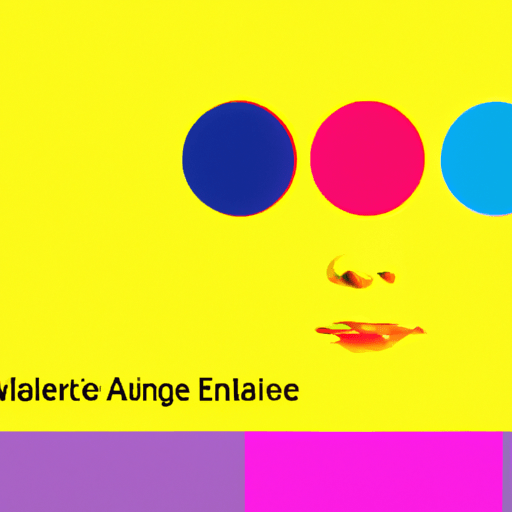
-
Table of Contents
Emotional Intelligence in Interface Design

Interface design plays a crucial role in shaping user experiences. While functionality and aesthetics are often prioritized, the emotional impact of design is equally important. Emotional intelligence in interface design refers to the ability to understand and empathize with users’ emotions, and to design interfaces that effectively communicate and respond to those emotions. In this article, we will explore the significance of emotional intelligence in interface design, its impact on user satisfaction and engagement, and provide practical examples and case studies to illustrate its effectiveness.
The Importance of Emotional Intelligence in Interface Design
1. Enhancing User Engagement:
- Emotional intelligence in interface design helps create a connection between the user and the interface, leading to increased engagement.
- By understanding users’ emotions, designers can create interfaces that evoke positive emotions, making the experience more enjoyable and memorable.
- For example, social media platforms like Facebook and Instagram use emotional intelligence to design features that trigger positive emotions such as likes, comments, and shares, encouraging users to stay engaged.
2. Improving User Satisfaction:
- Emotionally intelligent interface design focuses on meeting users’ emotional needs, resulting in higher user satisfaction.
- By considering users’ emotions throughout the design process, designers can create interfaces that are intuitive, easy to use, and visually appealing.
- For instance, Apple’s iOS interface design prioritizes simplicity and elegance, evoking a sense of satisfaction and delight among users.
3. Building Trust and Loyalty:
- Emotionally intelligent interfaces build trust by understanding and responding to users’ emotions, fostering a sense of empathy and connection.
- When users feel understood and supported by an interface, they are more likely to develop loyalty towards the product or service.
- Amazon, for example, uses emotional intelligence in its interface design by providing personalized recommendations based on users’ browsing and purchasing history, creating a sense of trust and loyalty.
Practical Strategies for Incorporating Emotional Intelligence in Interface Design
1. User Research and Empathy:
- Conduct user research to understand the target audience’s emotions, needs, and motivations.
- Use empathy maps and user personas to gain insights into users’ emotional states and design interfaces that address their specific emotional needs.
- For example, Airbnb uses user research and empathy to design interfaces that cater to travelers’ emotions of excitement, curiosity, and trust.
2. Visual Design and Emotional Appeal:
- Utilize color psychology and visual elements to evoke specific emotions in users.
- Choose colors, typography, and imagery that align with the desired emotional response.
- For instance, healthcare apps often use calming colors and soft visuals to create a sense of trust and relaxation.
3. Microinteractions and Feedback:
- Design microinteractions that provide immediate feedback and acknowledge users’ actions.
- Use animations, sounds, and haptic feedback to create a more engaging and emotionally satisfying experience.
- For example, when a user successfully completes a task on a productivity app, a celebratory animation or sound can evoke a sense of accomplishment and motivation.
4. Error Handling and Recovery:
- Design error messages and recovery processes that consider users’ emotions during moments of frustration or disappointment.
- Provide clear and empathetic error messages that guide users towards resolving the issue.
- For instance, instead of displaying a generic error message, a messaging app could apologize for the inconvenience and offer suggestions for troubleshooting.
Case Studies: Emotional Intelligence in Interface Design
1. Slack:
Slack, a popular team communication platform, incorporates emotional intelligence in its interface design by using playful animations and positive reinforcement. When users send a message, they see a small animation of a hand reaching out to deliver the message, creating a sense of connection and satisfaction. Additionally, Slack uses emojis and GIFs to add emotional context to conversations, making the platform more engaging and enjoyable.
2. Headspace:
Headspace, a meditation and mindfulness app, focuses on emotional intelligence in its interface design to create a calming and supportive experience. The app uses soothing colors, gentle animations, and a friendly voice to guide users through meditation sessions. It also provides personalized recommendations based on users’ emotional states and goals, helping them address specific emotional needs.
Summary
Emotional intelligence in interface design is a powerful tool for creating engaging, satisfying, and trustworthy user experiences. By understanding and empathizing with users’ emotions, designers can design interfaces that evoke positive emotions, meet emotional needs, and build strong connections with users. Incorporating strategies such as user research, visual design, microinteractions, and error handling can significantly enhance the emotional intelligence of interfaces. Case studies like Slack and Headspace demonstrate the effectiveness of emotional intelligence in interface design. Ultimately, by prioritizing emotional intelligence, designers can create interfaces that leave a lasting positive impact on users.
